-
Car Reviews
- All reviews
- Midsize SUVs
- Small cars
- Utes
- Small SUVs
- Large SUVs
- Large cars
- Sports SUVs
- Sports cars
- Vans
Latest reviews
- Car News
-
Car Comparisons
Latest comparisons
- Chasing Deals
PHEV 4x4s are coming in quick, but can GWM’s plug-in newcomer take the challenge to the dominant BYD Shark 6?
The recent release of the BYD Shark 6 clearly uncovered a healthy appetite in Australia for plug-in hybrid four-wheel-drive utes. It feels like this style of vehicle could on paper solve a few problems, and now other vehicle manufacturers are playing catch up in an attempt to get PHEV utes on local dealership forecourts ASAP.
Chinese manufacturer GWM has taken second place on the PHEV ute podium with the release of its 2025 Cannon Alpha PHEV 4×4 ute. And for its part in the narrative, a plug-in version of the huge-selling Ford Ranger is will arrive soon, hot on the Chinese utes’ wheel tracks.
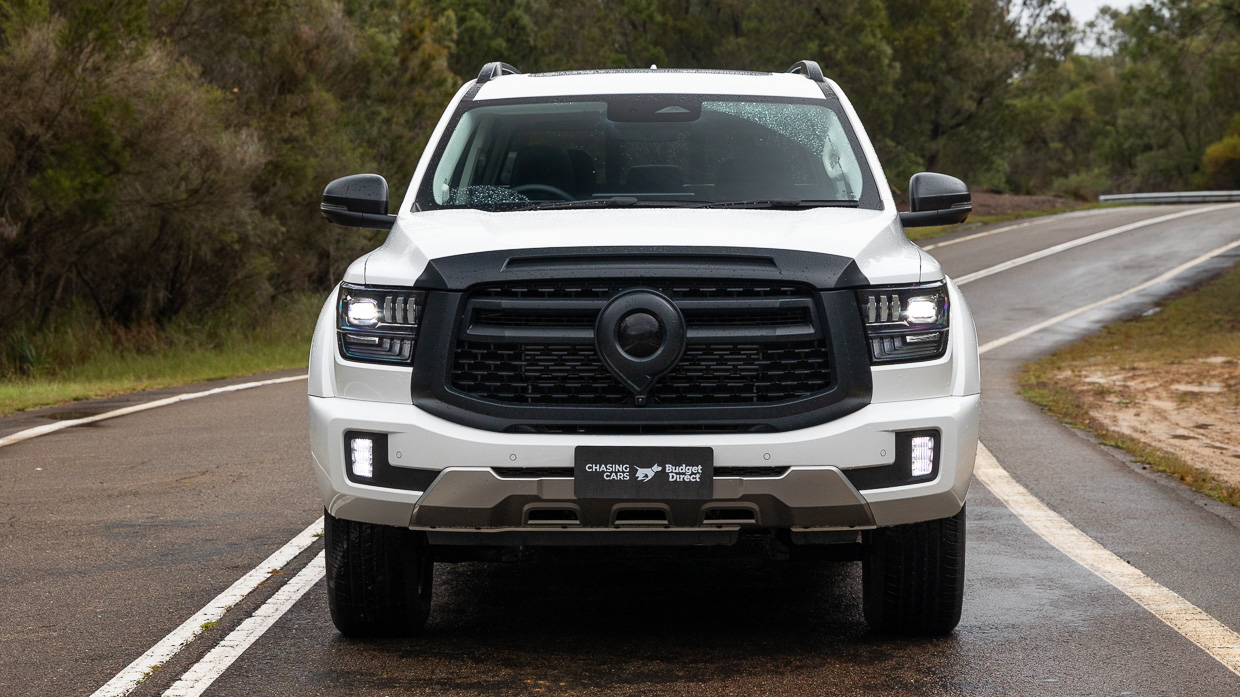
Before we dive into how the Cannon Alpha PHEV drives, let’s look at some details as to what makes this new 4×4 dual-cab tick. Because I’m sure there will be a few dyed-in-the-wool off-roaders who are keen to know more about a vehicle like this.
Right off the bat, the plug-in version of the Cannon Alpha fronts up with solid 4×4 credentials, offering front and rear diff locks (in top spec), a proper transfer case with low-range gearing, and the ability to wade 800mm of water to get things started. I have your attention now, right?
Then there’s pricing. The base Lux PHEV starts from $62,990 driveaway, while the high-grade Ultra PHEV on test here kicks off from $69,490 driveaway for private buyers (GWM was also doing ABN EFOY deals at time of review).
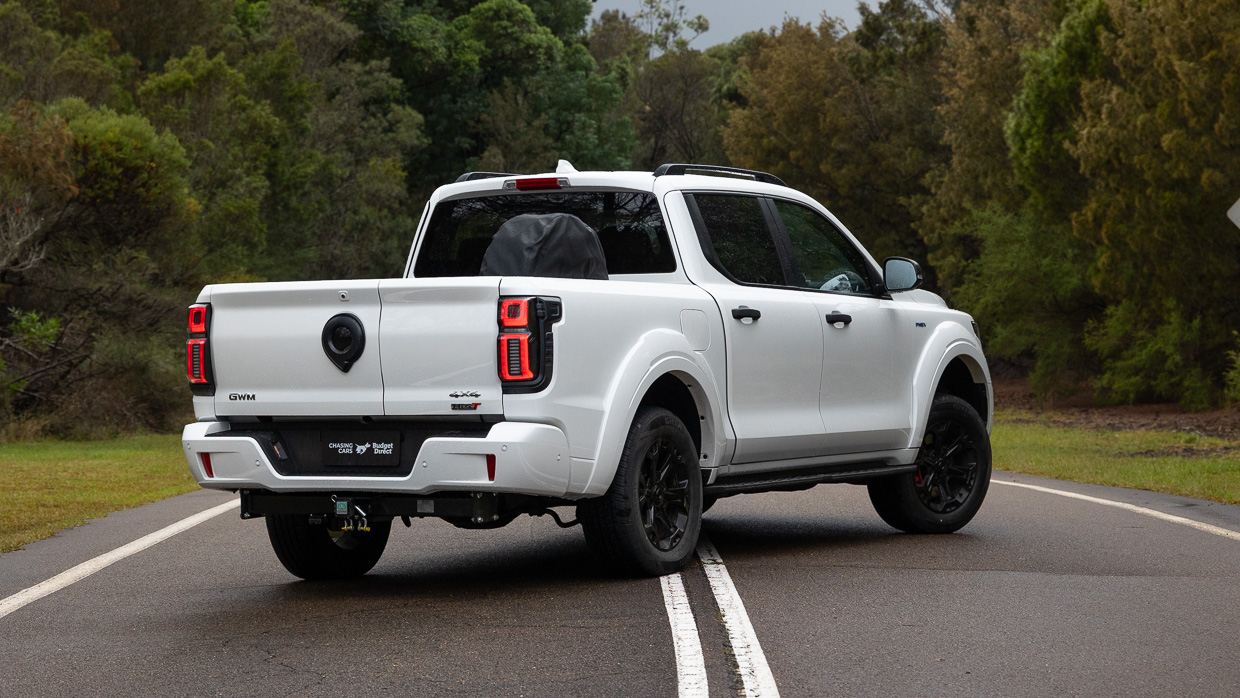
For the launch of the Cannon Alpha PHEV, GWM Australia wanted to do things differently. So rather than construct a launch event with a cleverly curated obstacle course that showcases the strengths of said vehicles, the importer was keen for local media to make their own test for the PHEV ute at their own locations, if after an informal information session.
It’s a good approach, allowing Chasing Cars to conduct the testing and create the content we want to make. For example, we won’t be towing with the Cannon Alpha PHEV on this test, instead focussing on the off-road ability and day-to-day living side of things.
GWM Australia told Chasing Cars that it has a clear agenda: to crack the top-five sales spot in the ute market. And it feels that offering fuel efficient powertrains will help bolster its chances in achieving that result.
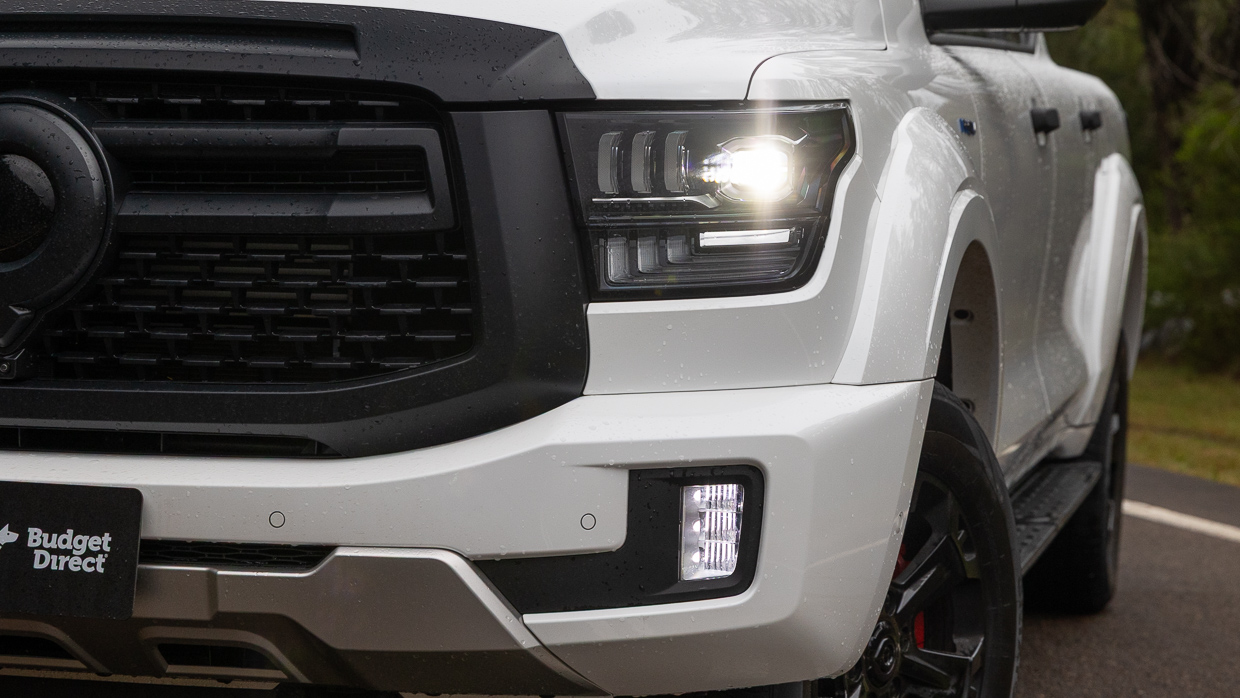
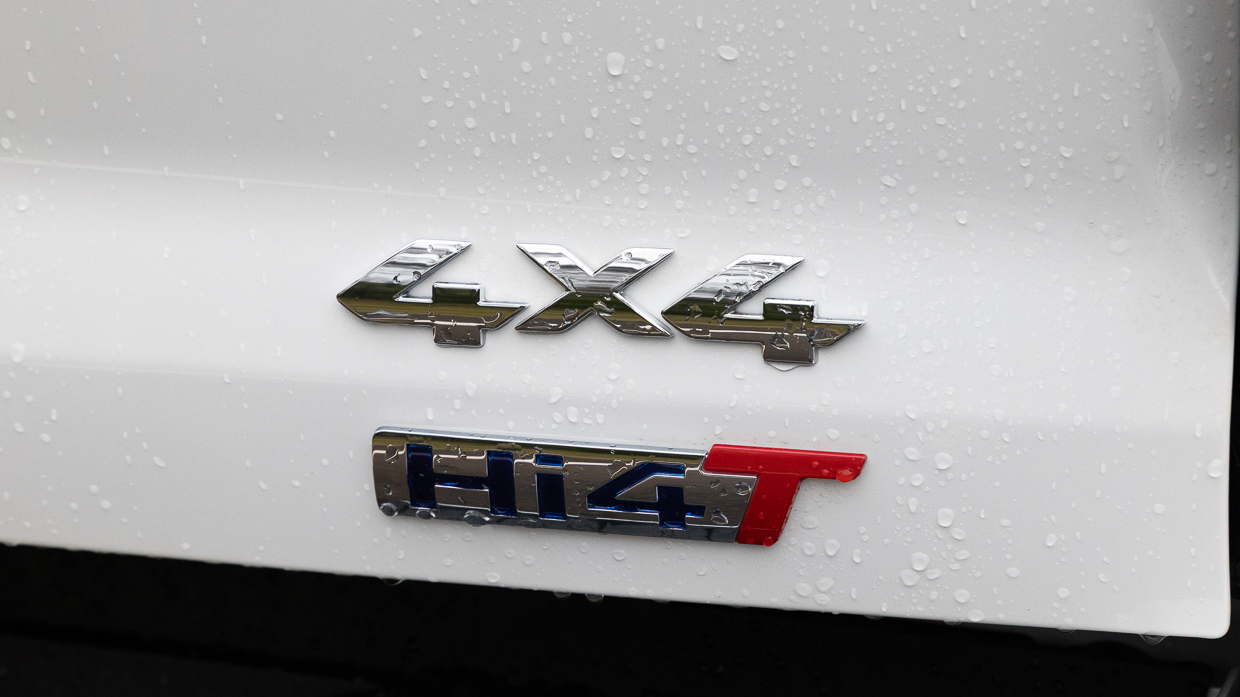
Its PHEV ute offering also has to be able to tow 3500kg, meet local five-star ANCAP rating benchmarks, and has to be good when it comes to off-road capability. This makes the 2025 Cannon Alpha PHEV the flagship ute in the GWM stables.
Going back to the design stages, Great Wall Motors actually had two platforms to choose from when deciding to produce this vehicle: its Hi4-T Mechanical 4×4 System (which was chosen) and their Hi4-Z De-coupled 4×4 system. The latter is similar in design to that used in the BYD shark, with no mechanical locking of drive between the front and rear.
As GWM considered this system to be more suitable as a light-duty all-wheel drive, it decided to give the Australian market a full-fat four-wheel drive with diff locks and a transfer case that aligns it more with the 4×4 ute segment’s leading lights.
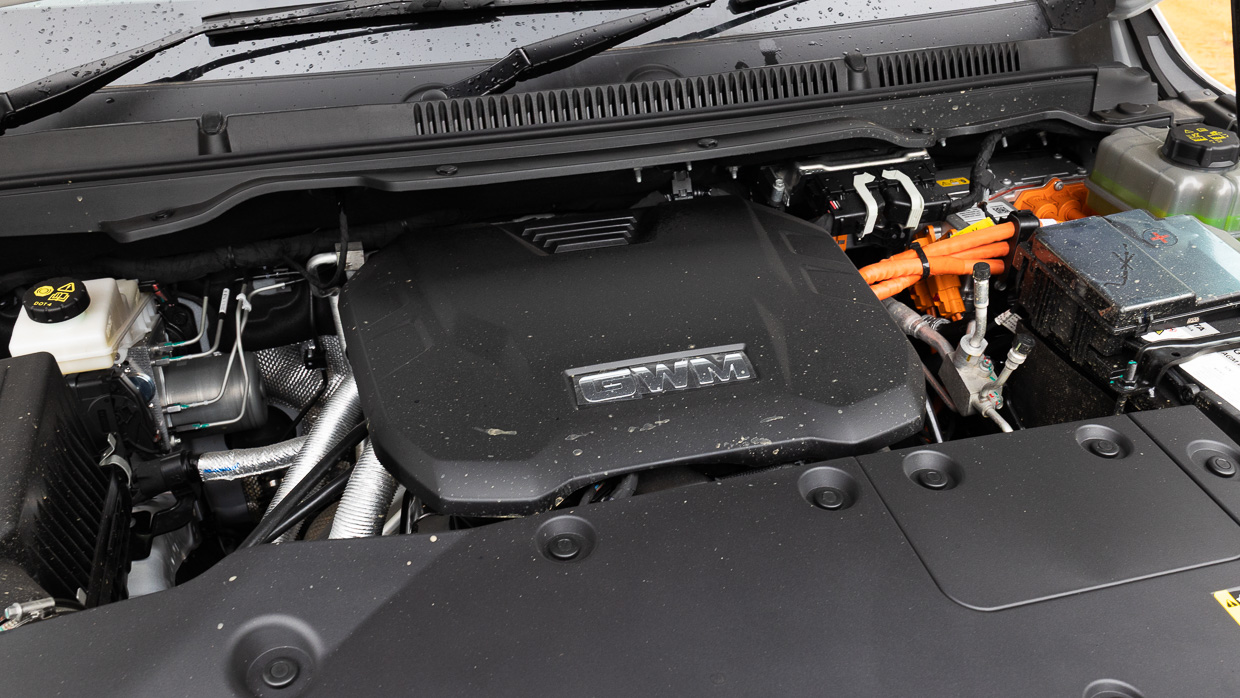
The Cannon Alpha PHEV’s ICE drive comes from a 2.0L turbocharged petrol engine that squeezes out a claimed 180kW of power with 380Nm of torque. GWM’s own nine-speed 9HAT Hybrid auto transmission has been selected; which is an interesting alternative in the world coloured with eight-speed ZFs. This gearbox is water and oil cooled.
The electric motor’s 120kW and 400Nm peaks are sent to the nine-speed automatic transmission via a traditional torque converter. This provides a combined claimed output of 300kW and 750Nm.
There are two ternary lithium batteries configured under the Cannon Alpha in an A-B format with 15.2kWh and 21.9kWh batteries incorporated. Total battery capacity is listed as 37.11kWh, with GWM telling us it tested this system to operate in temperature extremes between -40 and up to +50 degrees. Will that be enough for the baking Australia sun? Time will tell.
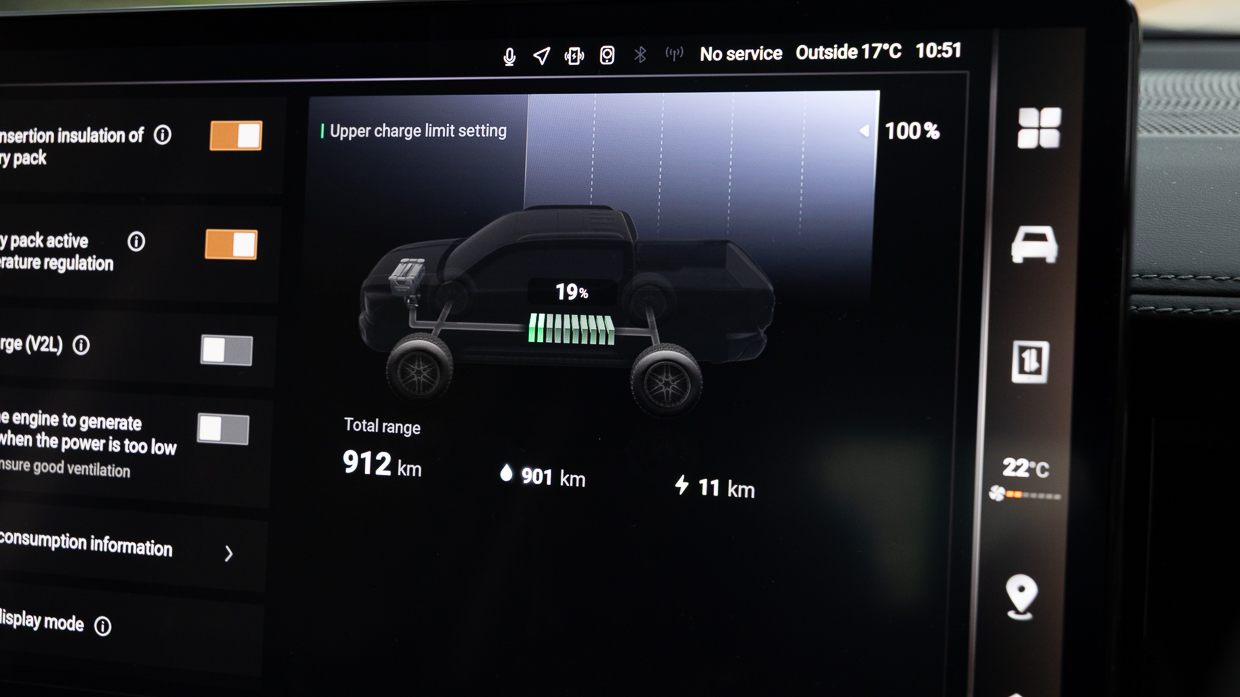
These batteries have also been given an IP67 water resistance rating. To achieve this, they needed to survive 30 minutes of submersion in one-metre of water, allowing the aforementioned 800mm wading depth capability.
Warranty wise you’ll see an eight-year battery warranty with seven years of warranty on the vehicle, as well as seven years of capped price servicing and roadside assistance.
In terms of 4×4 credentials, you’ll get a BorgWarner transfer case with 2.64-ratio low-range gearing reduction. This transfer case does offer an auto mode (good in slippery conditions on-road) as well as high-range 4×4 and low-range 4×4 – it kind of seems like rival BYD Shark has left the chat when you see those stats.
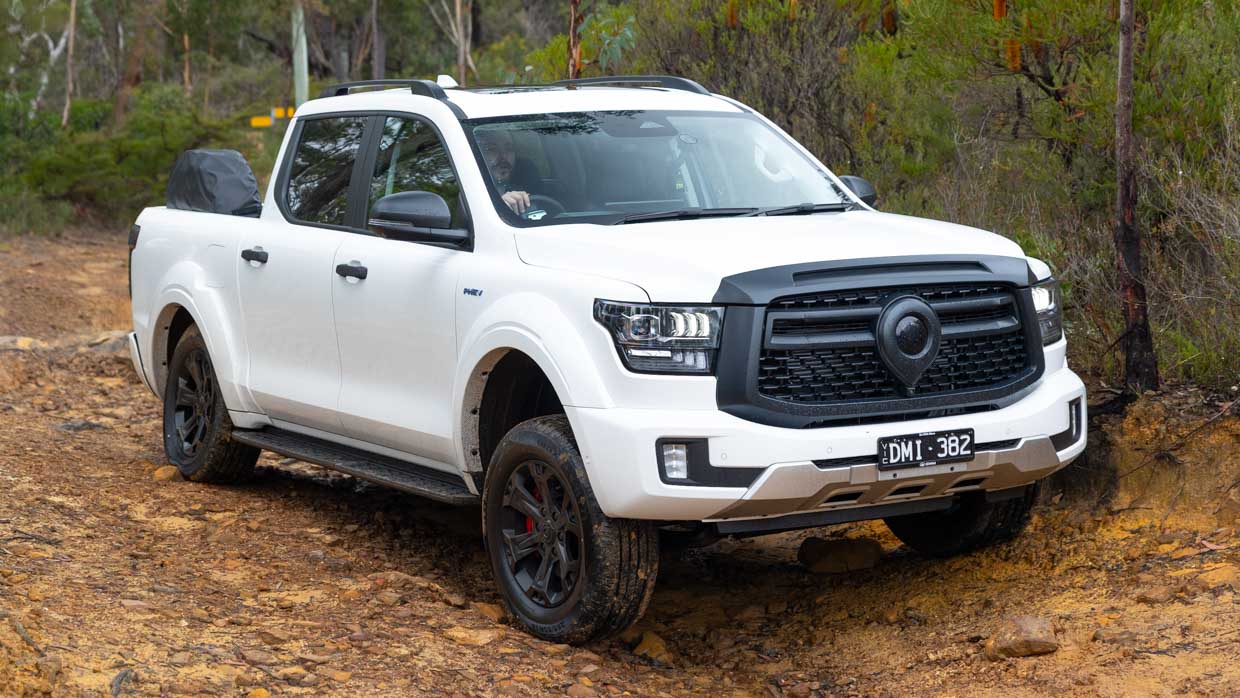
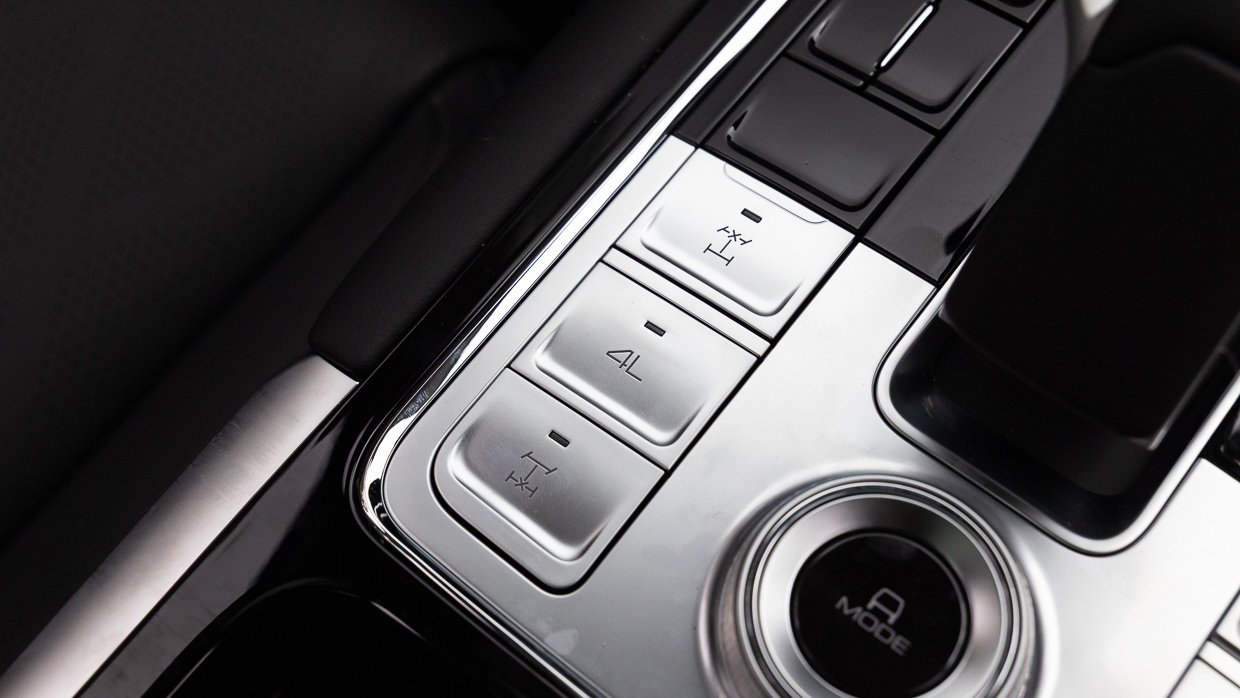
In operation, when you drive the Cannon Alpha PHEV in EV mode, the vehicle is primarily rear-wheel drive. When you lock the Cannon Alpha into 4×4, the transfer case pushes out a direct 50/50 split front-to-rear.
There’s 420mm of ground clearance under the battery, giving the Cannon Alpha PHEV approximately 150-200mm more clearance than the BYD Shark.
Best in class towing capacity was a key inclusion for GWM, matching rivals such as Toyota HiLux’s and Ford Ranger’s 3500kg towing capacity. This is another area the Cannon Alpha also beats the BYD Shark, with its lower 2500kg maximum braked towing capacity proving to be a blocker for some potential buyers.
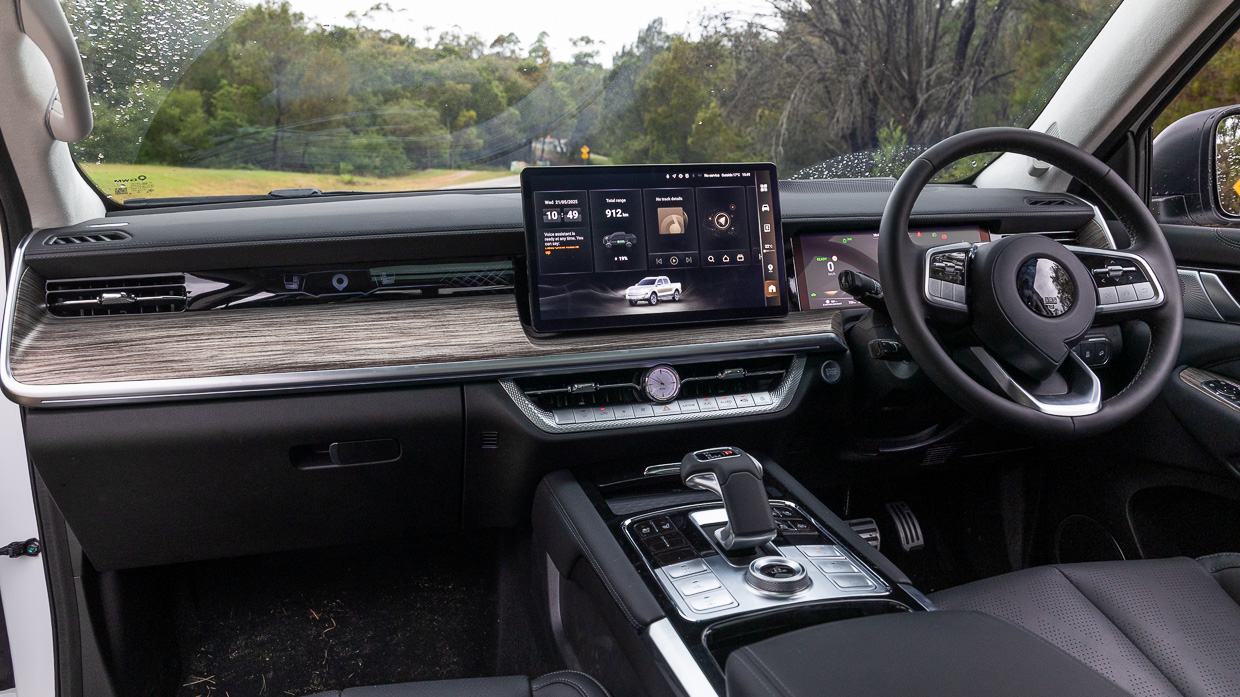
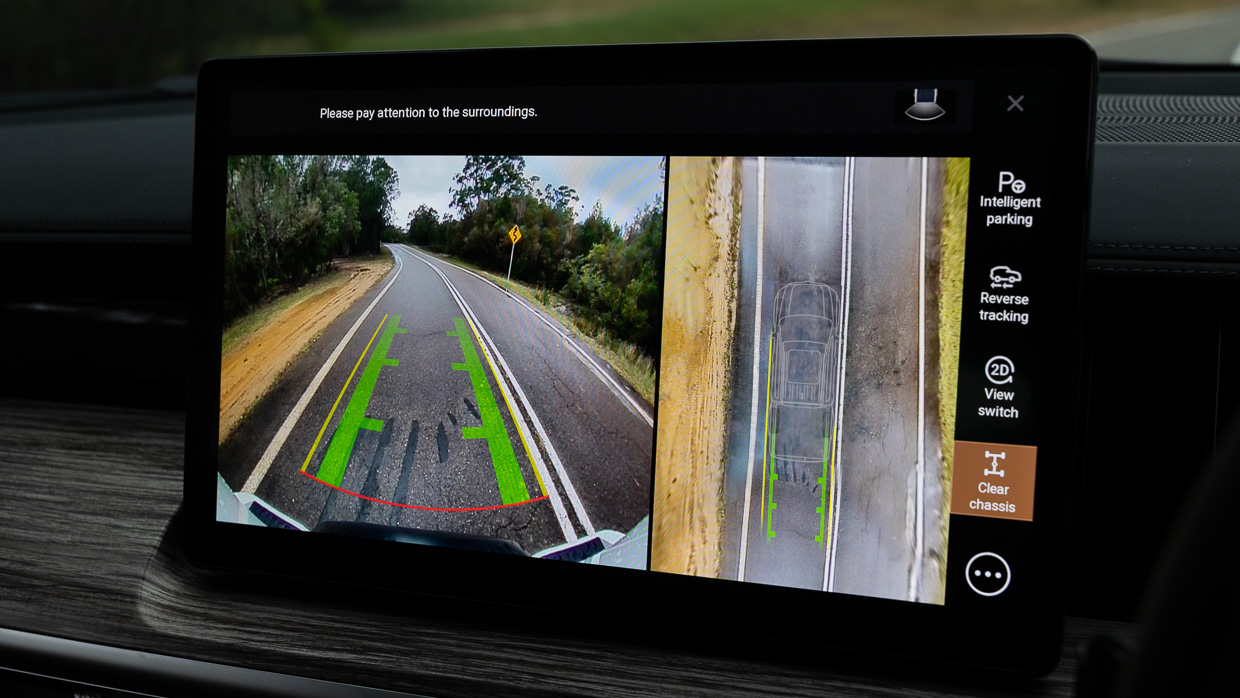
A 75-litre fuel tank feeds petrol to the 2.0L turbocharged motor, which is about an average size tank for a vehicle like this. Rear suspension is (hooray) a five-link with Panhard rod coil-sprung solid axle arrangement – there are no leaf springs to be seen here.
You’ll spot disc brakes on the rear as well which is a good inclusion. Please take note 4×4 manufacturers: we like disc brakes out there in the sticks.
This rear suspension design is based on the Tank 500 geometry, but spring rate and damper tuning is different. Naturally, being a ute, the Cannon Alpha will need to carry more weight and work harder, so this makes loads (pun absolutely intended) of sense.
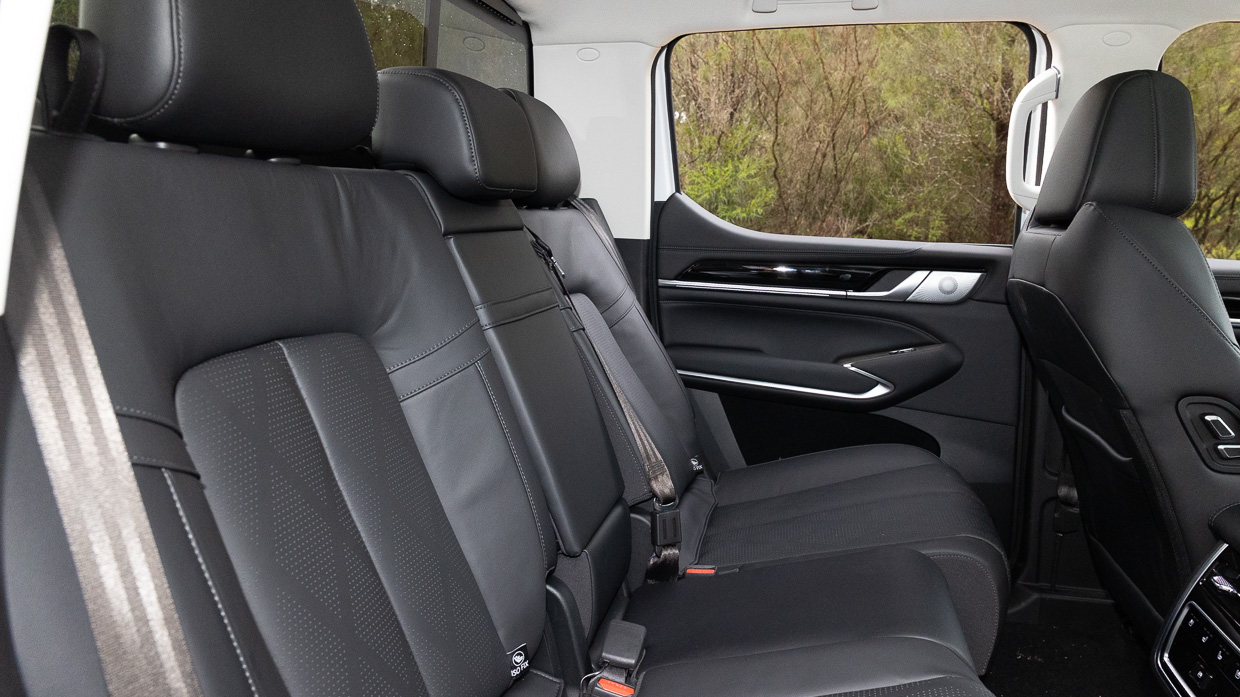
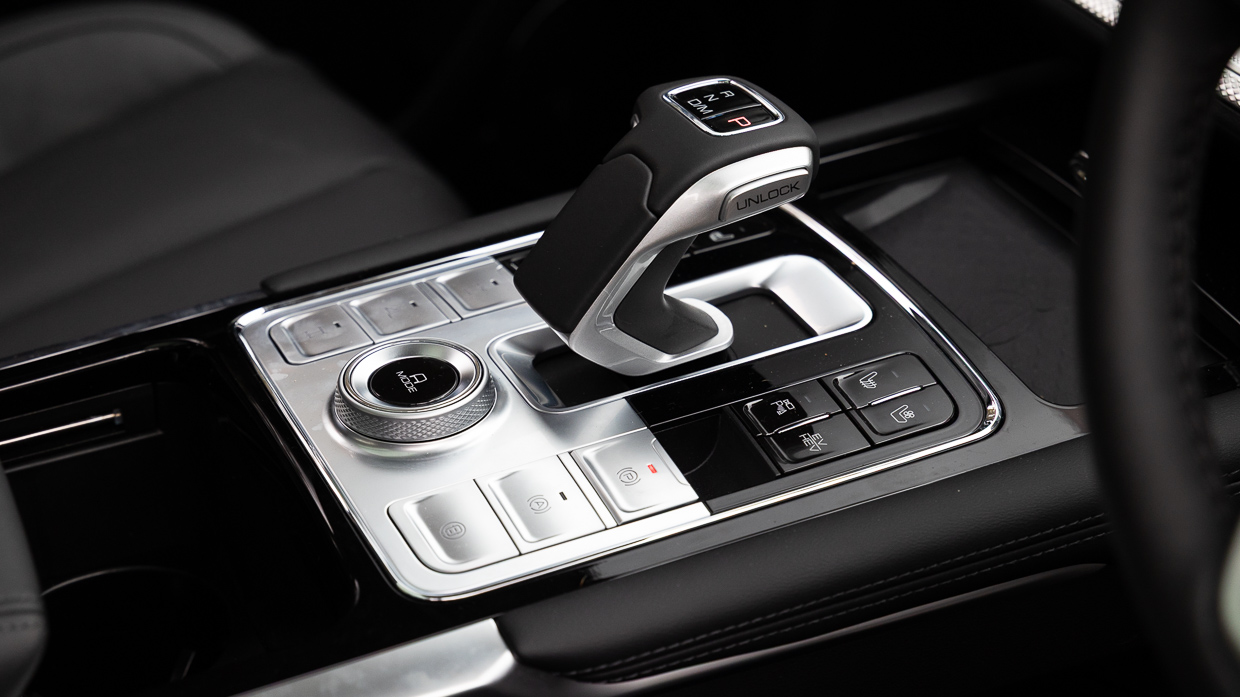
One point that we feel is important to mention is that you can swap on an aftermarket tray or service body canopy to the GWM Cannon Alpha. This is doable, but certainly far more difficult with a BYD Shark, and we’re told could also void the warranty if you were to fit a service body.
Aftermarket tinkers will like this fact very much and GWM actually sounded keen for buyers to go down this path, which is refreshing.
So how does the GWM Cannon Alpha PHEV drive on and off-road? Well, we pushed the limits, and came away impressed in some regards, and underwhelmed in other areas.
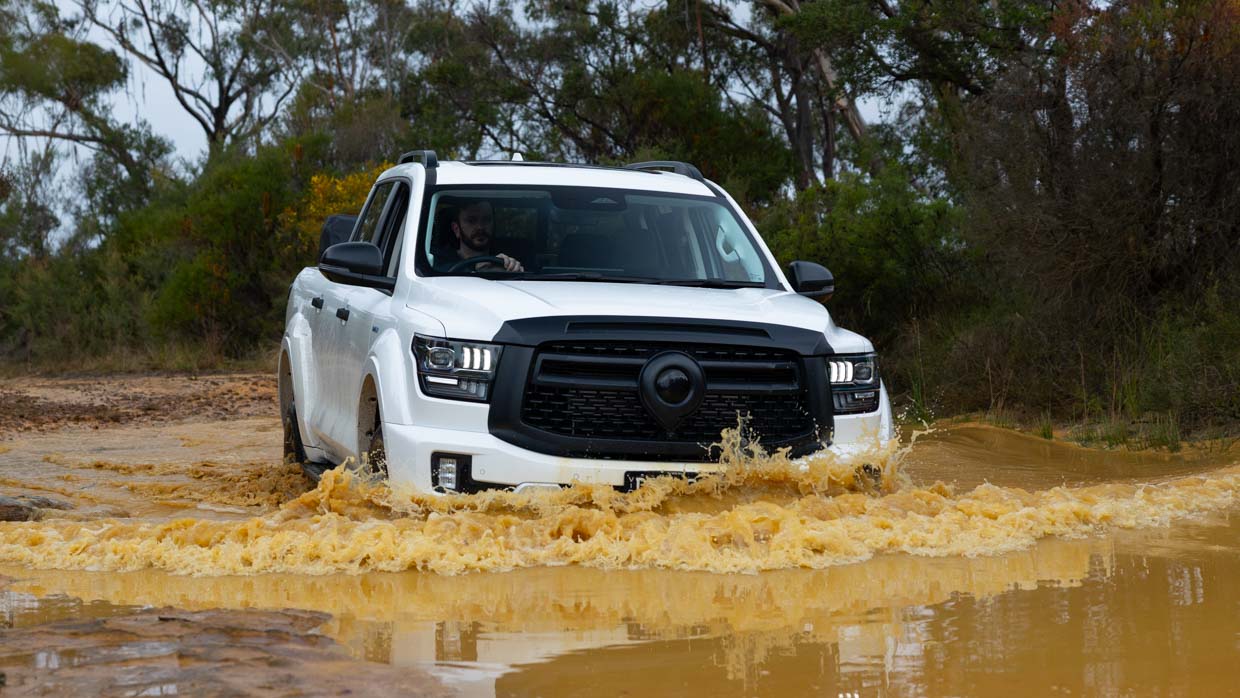
Off-road, the Cannon Alpha PHEV is very close to being class leading in its segment for capability, with really only the Ranger Raptor beating it when it comes to getting traction down to the ground. This is thanks to not only front and rear diff locks offering true four-wheel drive, but also a sensational aggressive off-road traction control calibration.
Something the Cannon Alpha does simply and easily is engage 4×4 via a centre console located push button. It’s always good to see a 4×4 system that operates without fuss, which is handy considering the Cannon Alpha is at its happiest when locked in low-range 4×4.
With coil spring on all four corners and a solid rear axle, there’s a decent amount of wheel travel, and ride comfort is pretty darn good in the rough stuff. I see the aftermarket having a field day with this rig.
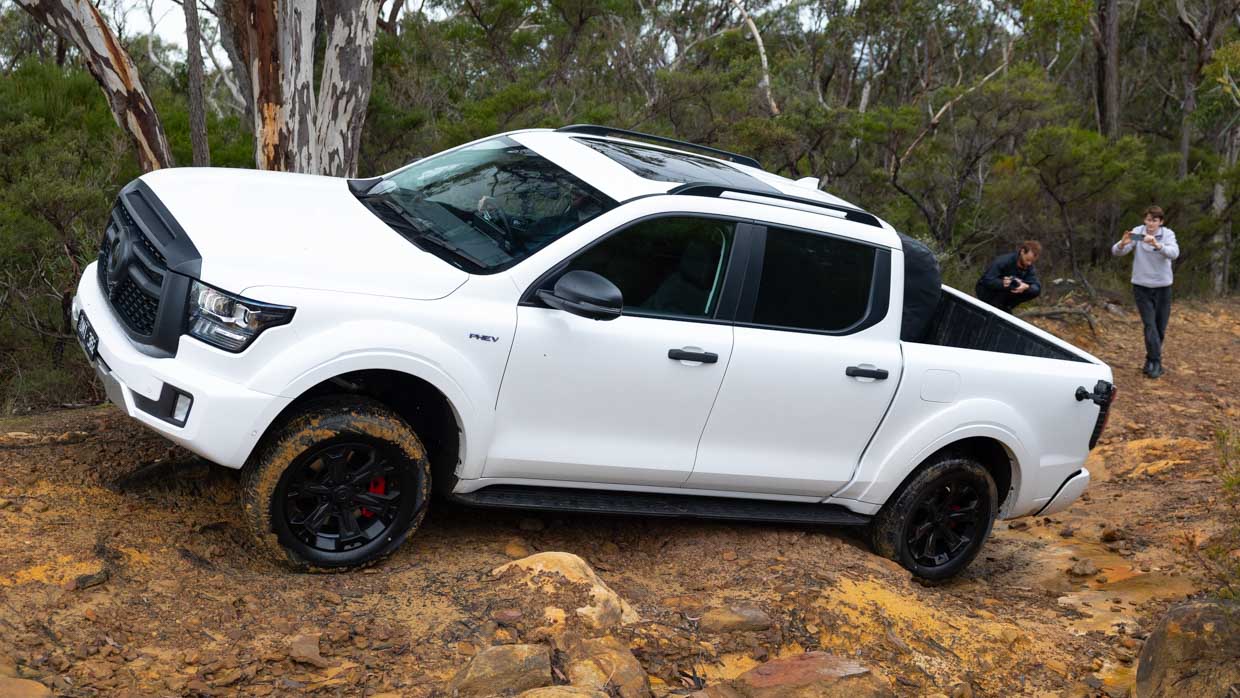
On-road however, I have to say the Cannon Alpha just feels… unfinished.
It’s not bad, but it could be really good. Our main gripe is that when you put your foot down on the accelerator, you never know what you’re going to get in terms of response. Sometimes there was a crazy amount of lag on take off, while other times there was a surge of power.
Accelerator run on was also something I experienced, which felt unpredictable and frankly unpleasant at times.
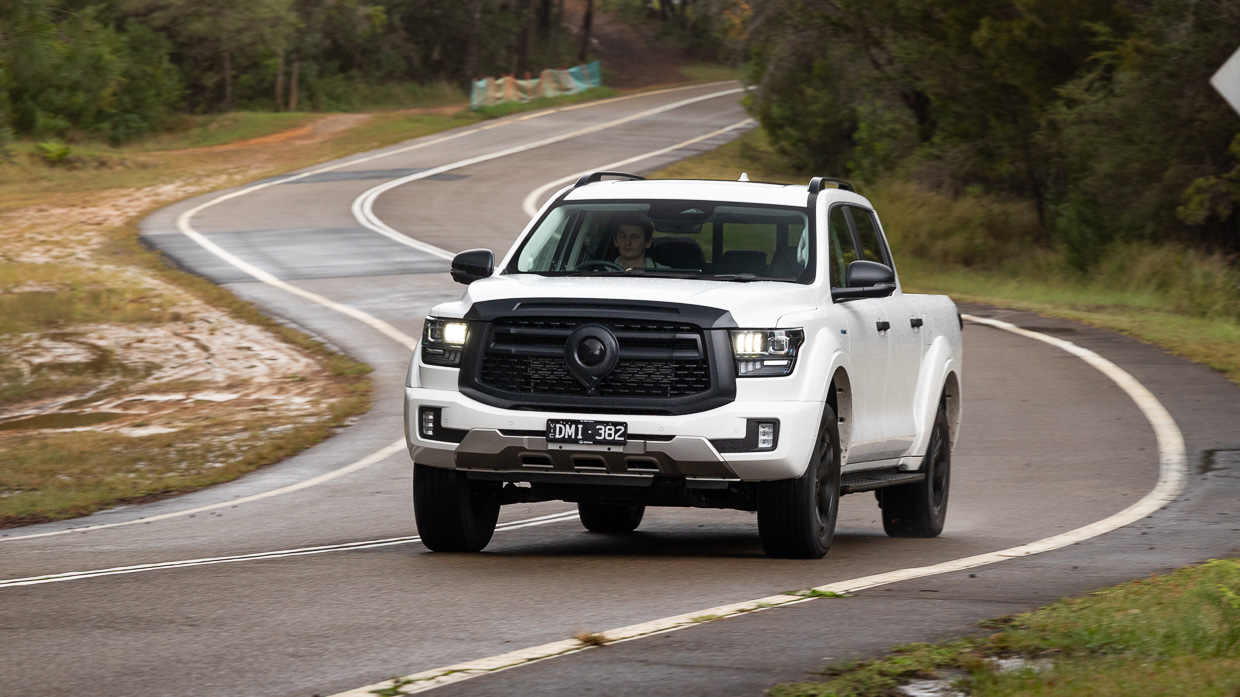
With some tuning tweaks to throttle control, this issue could be resolved. Eco Mode is not great for acceleration, Normal Mode not much better, but in Sports Mode, this experience is more consistent.
We can confirm, though, that we were able to achieve 115km of indicated EV range in a combined cycle that features stop/start traffic, highway and urban driving conditions. So full points to GWM for providing a vehicle that hits its claim (110kms NEDC).
Fuel usage for the GWM Cannon Alpha PHEV worked out to be just over 10L/100km in HEV mode. It’s advertised at just 1.7L/100km…if presuming, unrealistically, that you’re prepared to fully recharge the battery after every 100kms of travel…
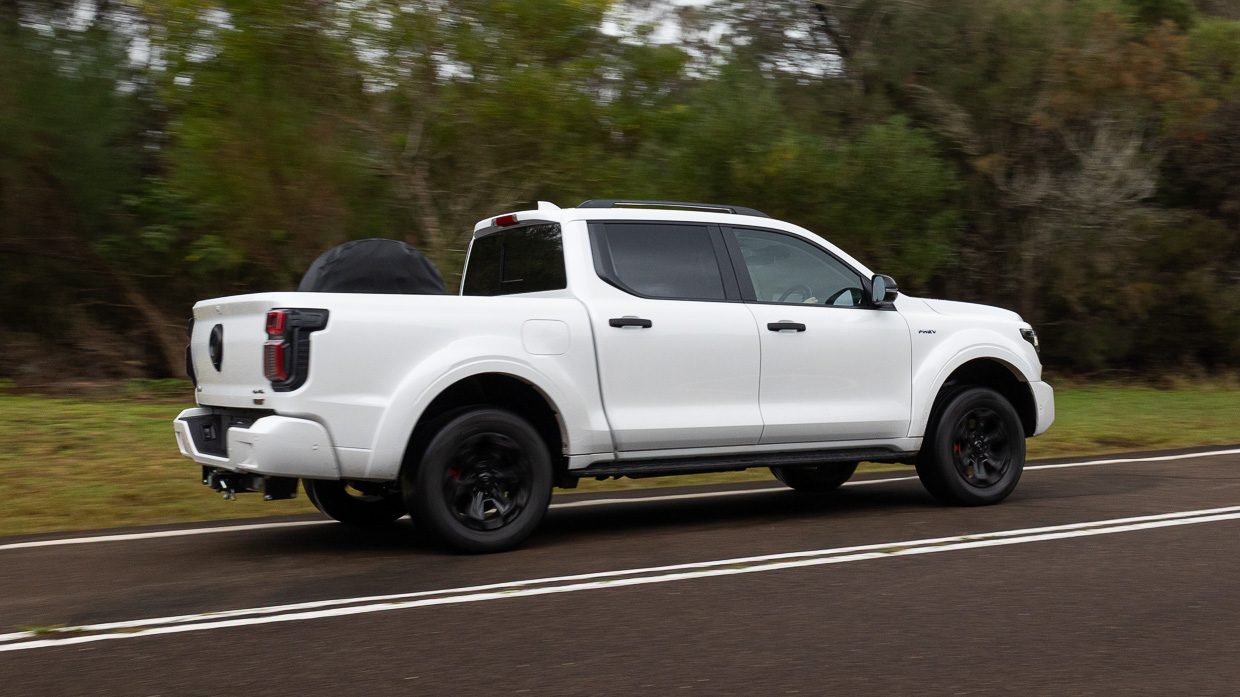
As Road Test Editor, John Law, said to me during this test, “why not just buy the diesel Cannon Alpha and pocket the spare change for modifications?” While it’s a solid point, if you want a PHEV then you probably don’t want to be opting for a diesel.
The steering wheel feels tiny in my hands also, the complete opposite of the BYD shark which feels chunky and solid. Steering feel was also quite light when I first picked up the Cannon Alpha, but you can tune up the weight using settings found in the touch screen though, even at a firmer setting, steering feel is somewhat elastic, with less than ideal return-to-centre.
At the back end, the split tailgate might seem like a cool idea but, in reality, we just found it to be a total pain.
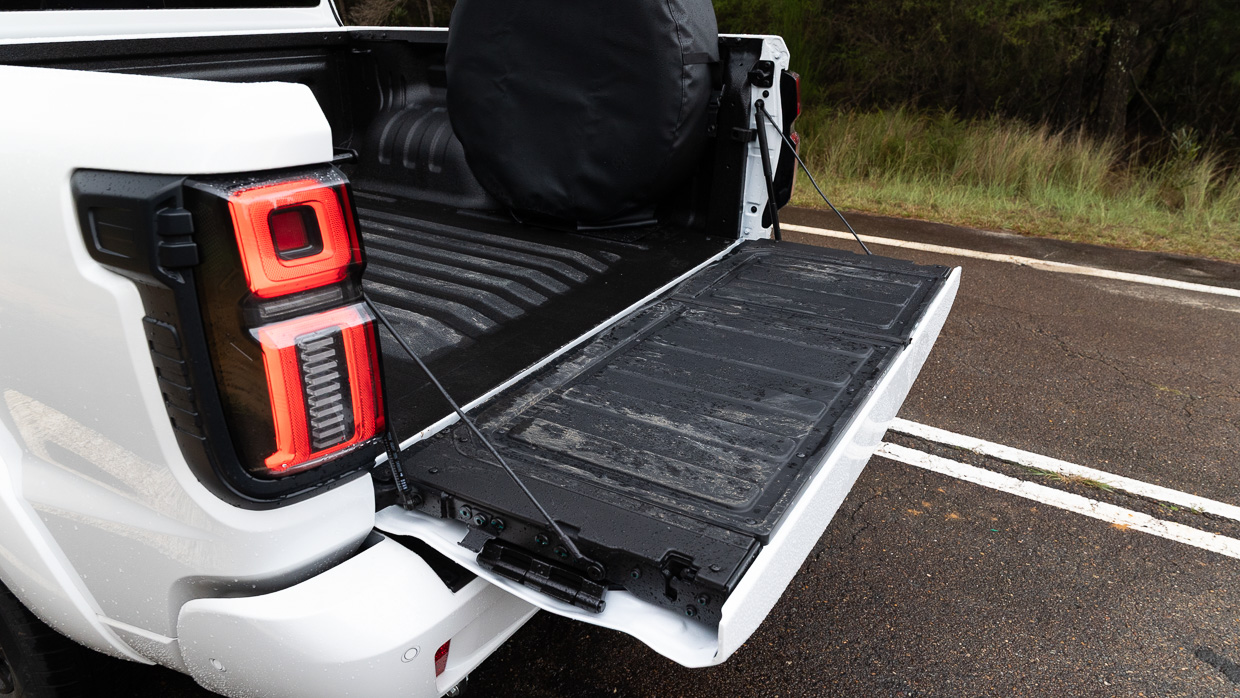
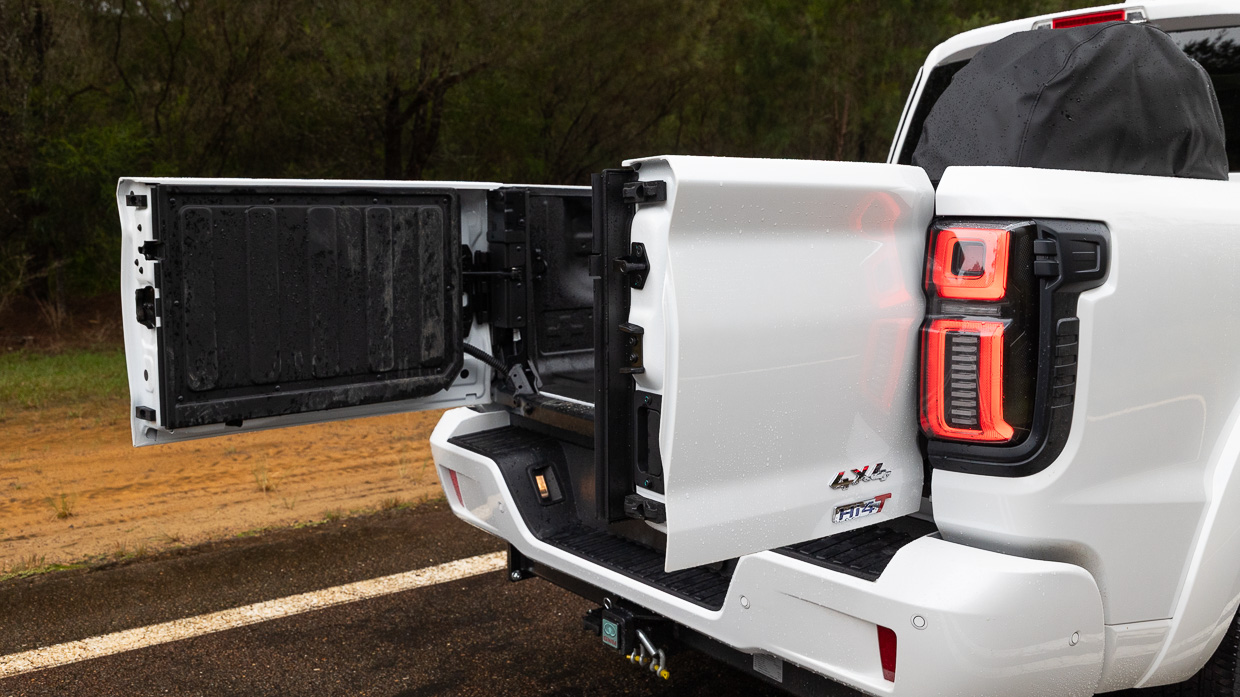
The small electronic actuator button you press once to drop the tailgate and twice to split the tailgate, was unpredictable in operation. Sometimes it worked, sometimes everything opened in a sprawling heap of metal that resembled a wounded Transformers cartoon character.
I’m sure we’ll be accused of user error and we’re open to gaining this criticism, but we weren’t the only ones to have issues with this system.
What’s wrong with a simple mechanical latch, with one on the outside to drop the tailgate and another one on the inside to split it? This would seem like a more robust solution to me, especially in a 4×4 that is going to see dust, mud and sand cover said mechanism.
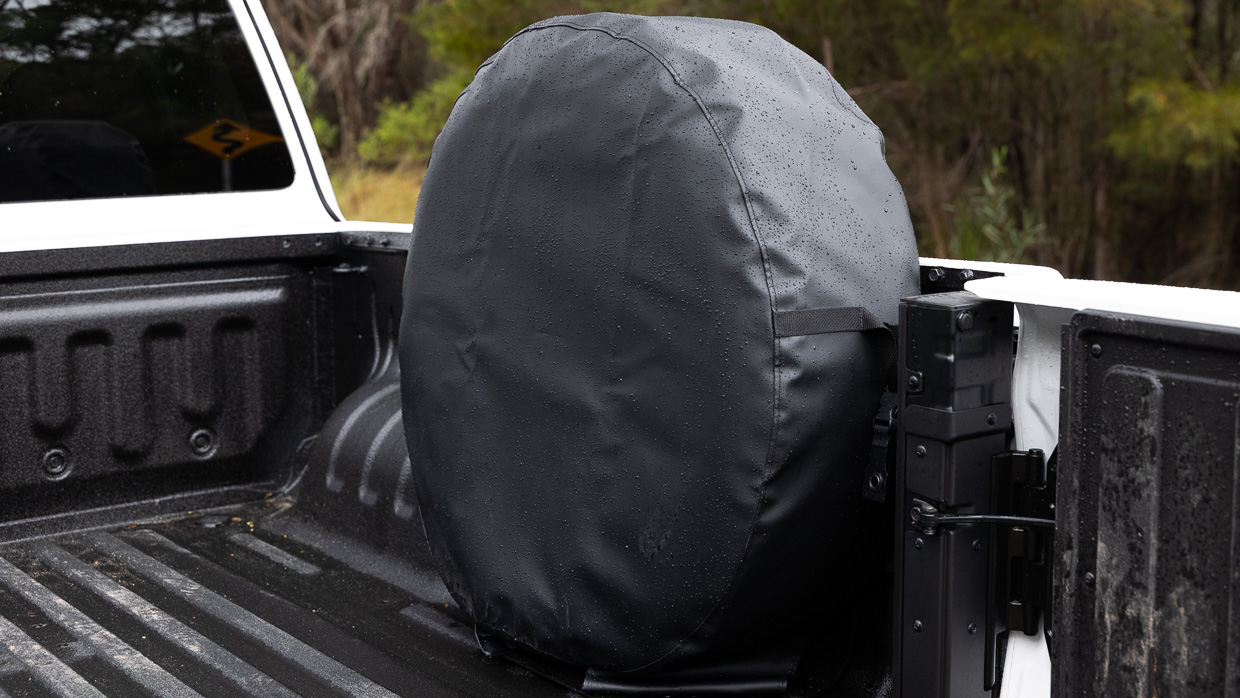
Something else that requires a better solution is the positioning of the spare wheel/tyre combo. While I can see why GWM has decided on this locally engineered solution, it’s a pretty ordinary outcome mounting it in the tub area, robbing end users of valuable tray space.
The reason for this is that GWM wanted to cram as much battery capacity as possible under the tray, which in turn leaves no room under the tray for the spare. You can’t rob Peter to pay Paul it seems…
So why not incorporate the spare into that unique split tailgate instead? Or provide a robust rear bar with a swing-away carrier? Excessive overall vehicle length, perhaps? GWM said it is looking into this.
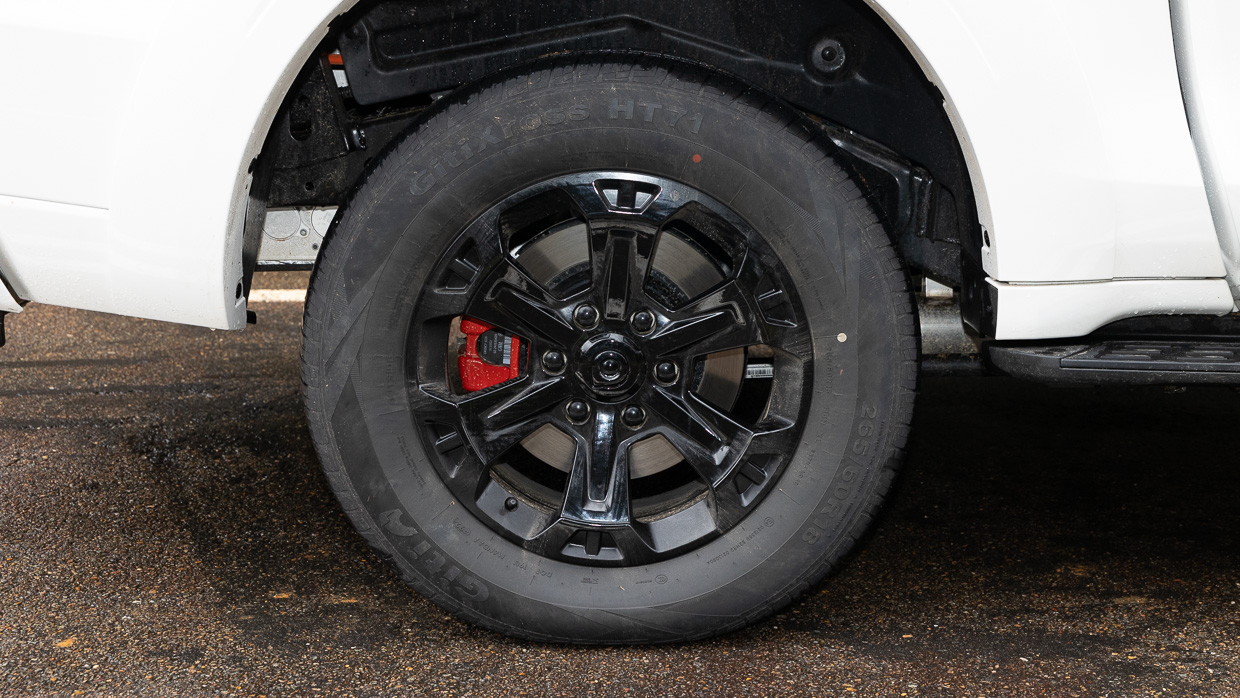
How can you run a tonneau cover or hard lid with this arrangement? You’d need to buy a canopy just to offer some security and protection from elements for your gear. A tyre repair kit is included for those that don’t want to run a spare, but we can’t advocate not having a spare tyre on any 4×4 that risks sidewall damage.
The spare tyre soft cover provided during the test at one point decided it wanted to live on the M2 Highway on a run home from filming. I was safely able to save that, and have been told on record that the cover on these launch vehicles has been redesigned with more straps. So this shouldn’t be an issue moving forward.
In summary, the GWM Cannon Alpha PHEV is a very capable and competent off-roader. I’m really impressed with how effortless it was to steer in technical terrain. And, it matched its claim of being able to travel 115km purely in EV mode.
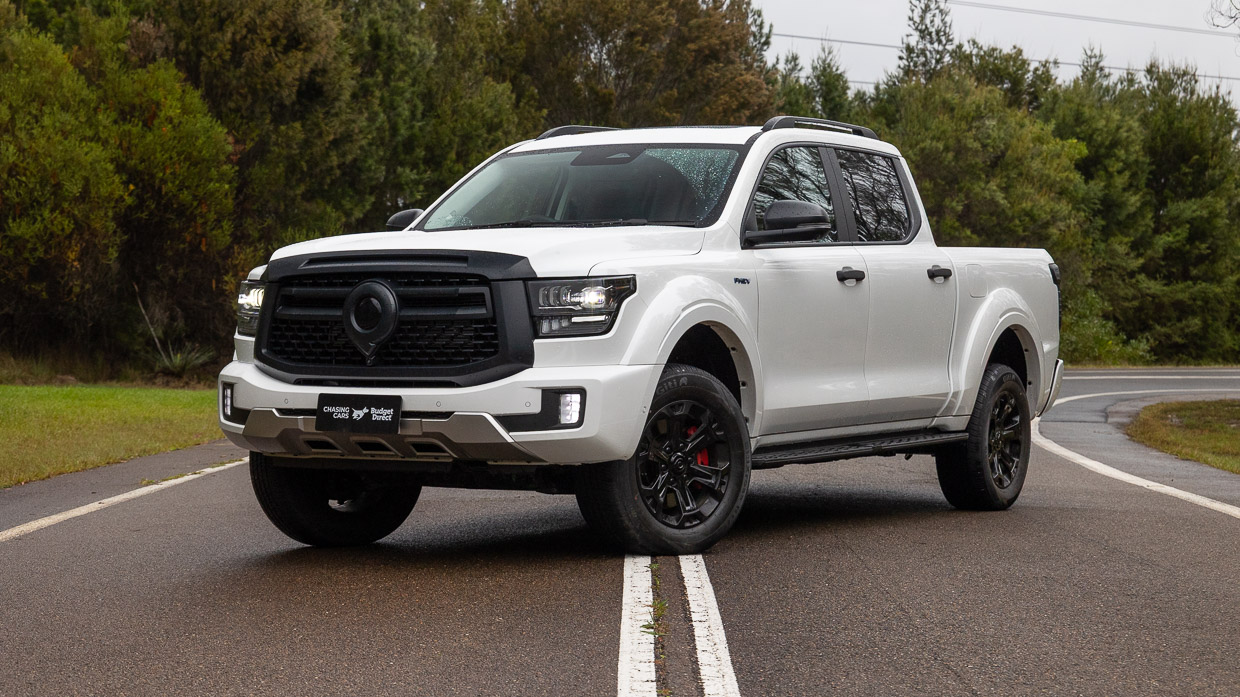
However, it just doesn’t feel quite finished yet. With some more local revisions to throttle control, on-road suspension dynamics and the overall package, we do see potential.
The Cannon Alpha wipes the floor with the Shark 6 off-road and at towing specs…but that is about it. But if you value off-road performance above anything else, take a Cannon Alpha for a spin.
The BYD Shark 6 still sets the benchmark when it comes to PHEV 4×4 Utes… that is, as long as you don’t need to climb a hill. More on that to come…
Key specs (as tested)
About Chasing cars
Chasing Cars reviews are 100% independent.
Because we are powered by Budget Direct Insurance, we don’t receive advertising or sales revenue from car manufacturers.
We’re truly independent – giving you Australia’s best car reviews.
The estimate provided does not take into account your personal circumstances but is intended to give a general indication of the cost of insurance, in order to obtain a complete quote, please visit www.budgetdirect.com.au. Estimate includes 15%^ online discount.
^Conditions Apply
Budget Direct Insurance arranged by Auto & General Services Pty Ltd ACN 003 617 909(AGS) AFSL 241 411, for and on behalf of the insurer, Auto & General Insurance Company Limited(ABN 42 111 586 353, AFSL 285 571).Because we don’t know your financial needs, we can’t advise you if this insurance will suit you. You should consider your needs and the Product Disclosure Statement before making a decision to buy insurance. Terms and conditions apply.
Indicative quote based on assumptions including postcode , 40 year old male with no offences, licence suspensions or claims in the last 5 years, a NCD Rating 1 and no younger drivers listed. White car, driven up to 10,000kms a year, unfinanced, with no modifications, factory options and/or non-standard accessories, private use only and garaged at night.
^Online Discounts Terms & Conditions
1. Discounts apply to the premium paid for a new Budget Direct Gold Comprehensive Car Insurance, Third Party Property Only or Third Party Property, Fire & Theft Insurance policy initiated online on or after 29 March 2017. Discounts do not apply to optional Roadside Assistance.
2. Discounts do not apply to any renewal offer of insurance.
3. Discounts only apply to the insurance portion of the premium. Discounts are applied before government charges, taxes, levies and fees, including instalment processing fees (as applicable). The full extent of discounts may therefore be impacted.
4. We reserve the right to change the offer without notice.